Ardebil TRAVEL GUIDE
Things to Do in Ardebil– Activities & Attractions
—————————Ο————————

Things to Do in Ardebil– Activities & Attractions
—————————Ο————————
Ardebil is an ancient city in northwestern Iran and the capital of Ardebil Province. The dominant majority in the city are ethnic Iranian Azerbaijanis and the primary language of the people is Azerbaijani.Ardebil is known for its trade in silk and carpets. Ardebil rugs are renowned and the ancient Ardebil Carpets are considered among the best of classical Persian carpets. Ardebil is also home to a World Heritage Site, the Ardebil Shrine, the sanctuary and tomb of Shaikh Safî ad-Dîn, eponymous founder of the Safavid dynasty.
The name Ardebil comes from the Avestan Artavil or Artawila which means “holy place”.
Due to its proximity to the Caucasus, Ardebil was always vulnerable to invasions and attacks by the mountain peoples of the Caucasus as well as by the steppe dwellers of South Russia past the mountains. In 730–731, the Khazars managed to get past the Alan Gates, defeated and killed the Arab governor of Armenia named Al-Jarrah ibn Abdallah on the plain outside the town of Ardebil, and subsequently captured the town, as they continued their conquests.
During the Islamic conquest of Iran, Ardebil was the largest city in north-western Iran, ahead of Derbent, and remained so until the Mongol invasion period. Ardebilis fought the Mongols three times; however, the city fell after the third attempt by Mongols, who massacred the Ardebilis. Incursions of Mongols and subsequently the Georgians, who, under Tamar the Great, captured and sacked the city with some 12,000 citizens reputedly killed, devastated the city. The city however recovered and was in a more blossoming state than before, though by this time the principal city in the Azerbaijan region had become Tabriz, and under the later Ilkhanate, it had become Soltaniyeh.
Safavid king Ismail I, born in Ardebil, started his campaign to nationalize Iran’s government and land from there but consequently announced Tabriz as his capital in 1501. Yet Ardebil remained an important city both politically and economically until modern times. During the frequent Ottoman-Persian Wars, being close to the borders, it was often sacked by the Ottomans between 1514 and 1722 as well as in 1915 during World War I when the former invaded neighbouring Iran. In the early Qajar period, crown prince Abbas Mirza, son of the then-incumbent king (shah) Fath Ali Shah Qajar (r. 1797–1834) was the governor of Ardebil. With Ardebil already once being sacked by the Russians during the Russo-Persian War of 1804–1813, and this being the era of the Russians steadily advancing into the Iranian possessions in the Caucasus, Abbas Mirza ordered the Napoleonic general Gardane, who served the Qajars at the time, to strengthen and fortify the town with ramparts.
During the next and final war, the Russo-Persian War of 1826–28, the ramparts were stormed by the Russian troops, who then temporarily occupied the town. The town’s extensive and noted library, known as the library of Safi-ad-din Ardebili, was taken to St. Petersburg by General Ivan Paskevich with the promise that its holdings would be brought to the Russian capital for safekeeping until they could be returned, a promise never fulfilled.
After the Russo-Persian Wars, Iran ceded its territories in the Caucasus to Russia under the terms of the Treaty of Turkmenchay (1828). As a result, Ardebil was situated only 40 kilometres from the newly drawn border, becoming even more important economically as a stop on a major caravan route along which European goods entered Iran from Russia. After he visited Ardebil in 1872, German diplomat Max von Thielmann noted, in his book published in 1875, the extensive activity in the town’s bazaar, as well as the presence of many foreigners, and estimated its population at 20,000.
During the early Iranian Constitutional. Revolution, Russia occupied Ardebil together with the rest of Iranian Azerbaijan until the eventual collapse of the Russian Empire in 1917.
Sheikh Safi-edin Ardabily Mausoleum
Sheikh Safi-edin Ardabily Mausoleum, is composed of a series of monuments built in various periods that was shaped as a complex for the first time by Shah Tahmasb. Later Shah Abbas added to the previous ones and renovated some sections. This historical complex is closely intertwined with the history of the Safavid Dynasty. Some of the Safavid kings as well as Shah Esmail I have been buried at this site. The main section of the mausoleum is composed of a circular tower with circumference of 22 m. which is about 17 meters high. In the interior of this monument, near Sheikh Safi’s tomb, the tomb of his son (the founder of mausoleum) and those of other family members can be found. At the time of Naseredin Shah Qajar, i. e. undefined , about 115 years ago, major renovations took place and some changes were made to the complex. This site has been a major attraction for domestic and international tourists. Main sections of the complex are the followings: the gate, the large court, the small court, the graveyard court, Shahidgah (martyrdom place), Janat Sara Mosque and Cheleh Khaneh which encircles Qandil Khaneh, Haramkhaneh and Chini Khaneh. undefined The Allah Allah Dome is very famous and probably the most spectacular part of the complex.
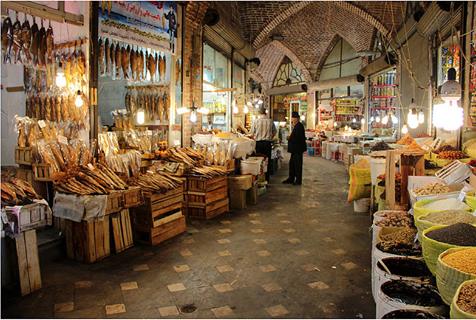
This bazaar stands as old as the Islamic period. It’s shape was described by the historians of 4th century AH. undefined as a cross, extending in four directions with simply designed domes. Most sections of the bazaar have been constructed and renovated during the Safavid Dynasty and Zand period. During the Safavid dynasty, Ardabil Bazaar was very commercially prosperous and was a center for commercial, social and political affairs. According to some documents, the bazaar is in the shape of a cross having a mosque in its center. The bazaar was divided into many different sections and each section was allocated to a special occupation, such as butchers bazaar and many other aisles. The whole complex of Ardabil Bazaar is covered with arched ceilings and simple domes. The lightening of the bazaar is supplied through holes on the ceilings. The most important part of this wonder is Qeysariyeh Bazaar which is really a must see due to its historical atmosphere. In and around the Ardabil Bazaar are many caravansaries and inns, owned by the estate of the Safavid Dynasty shrine, and mosques, some of which were endowed by Ata-Malik Juvayni (1226-1283) for the Shaykh Safi shrine.
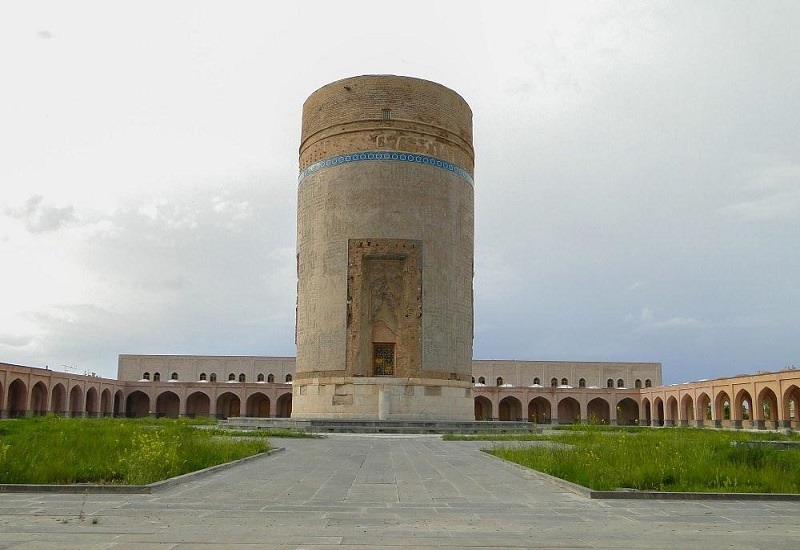
In the middle of Meshgin Shahr’s old neighborhood, you’ll find a beautiful garden that has a historical treasure in its heart: The tomb of Sheikh Haydar. Sheikh Haydar, the father of a renowned Persian king, was a great Sufi and a war hero who died in battle. That’s why he deserved such an impressive mausoleum. The 18-meter brick tower features turquoise tiling and intricate inscriptions.
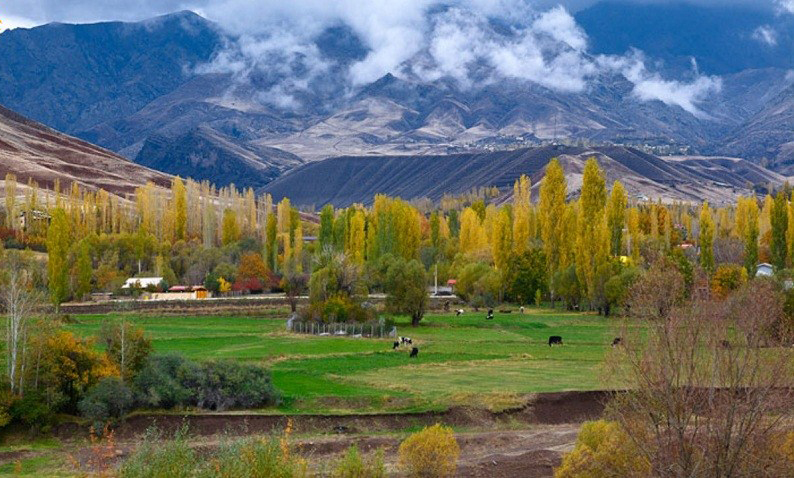
On your trip to Ardabil, don’t miss a visit to the nearby (32 km) town of hot springs: Sarein. Being close to an inactive volcano has blessed this beautiful place with Sulphur springs. Apart from their healing effects, Sarein’s Hot Spring Complexes are fun places to be! Have fun in the pools, dry saunas, steam saunas, water slides, or massage rooms.
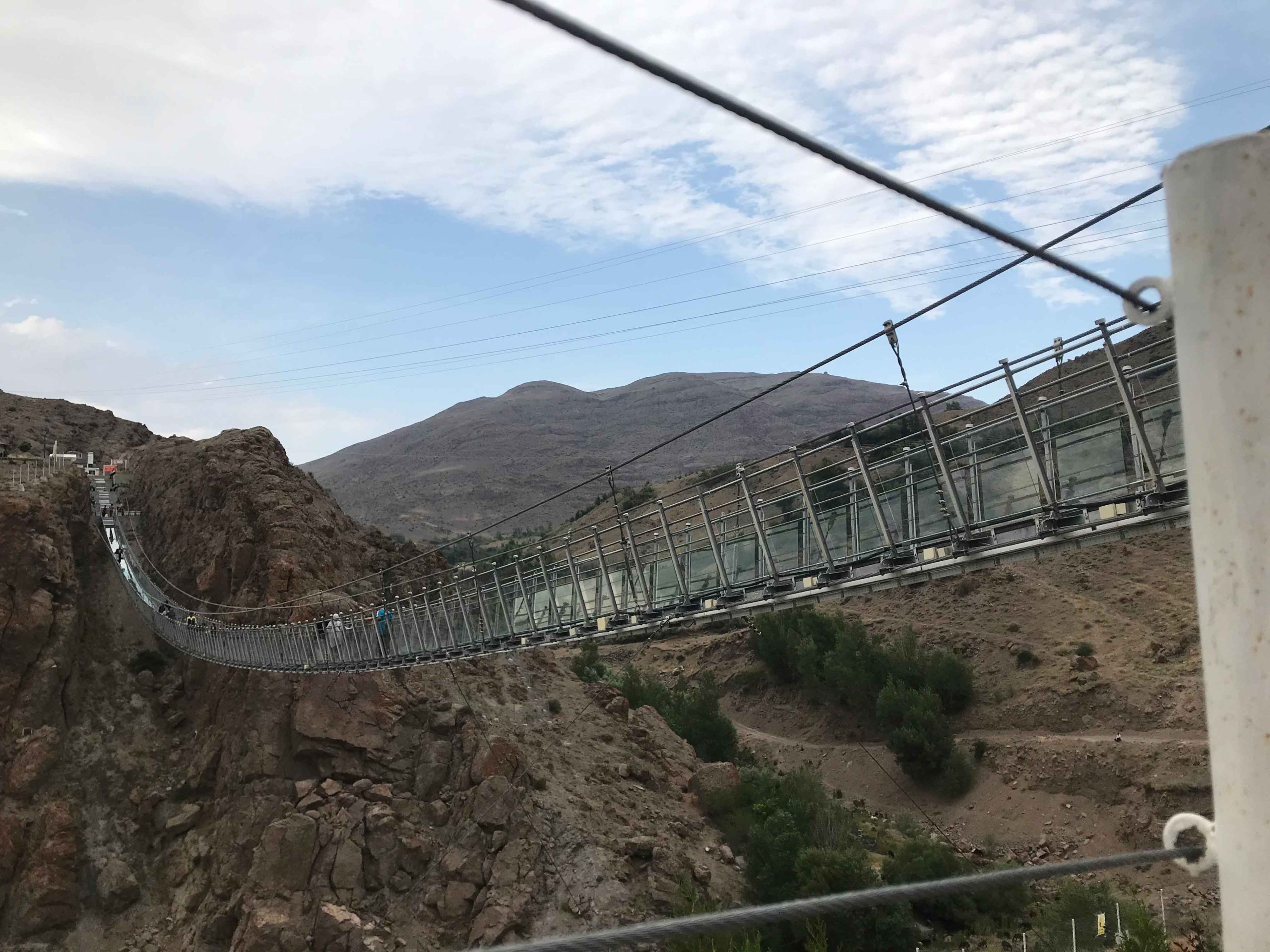
Enjoy a walk above Meshgin Shahr’s beautiful forest park on Middle East’s longest pedestrian suspension bridge. The 365-meter Suspension Bridge not only offers an exciting view from an 80-meter height, but it also pleases your eyes with an eye-catching river and scenic greenery. There is a village near meshkin shahr ( Hir ) which has a same bridge as well. Early spring to early fall is the best time to visit.
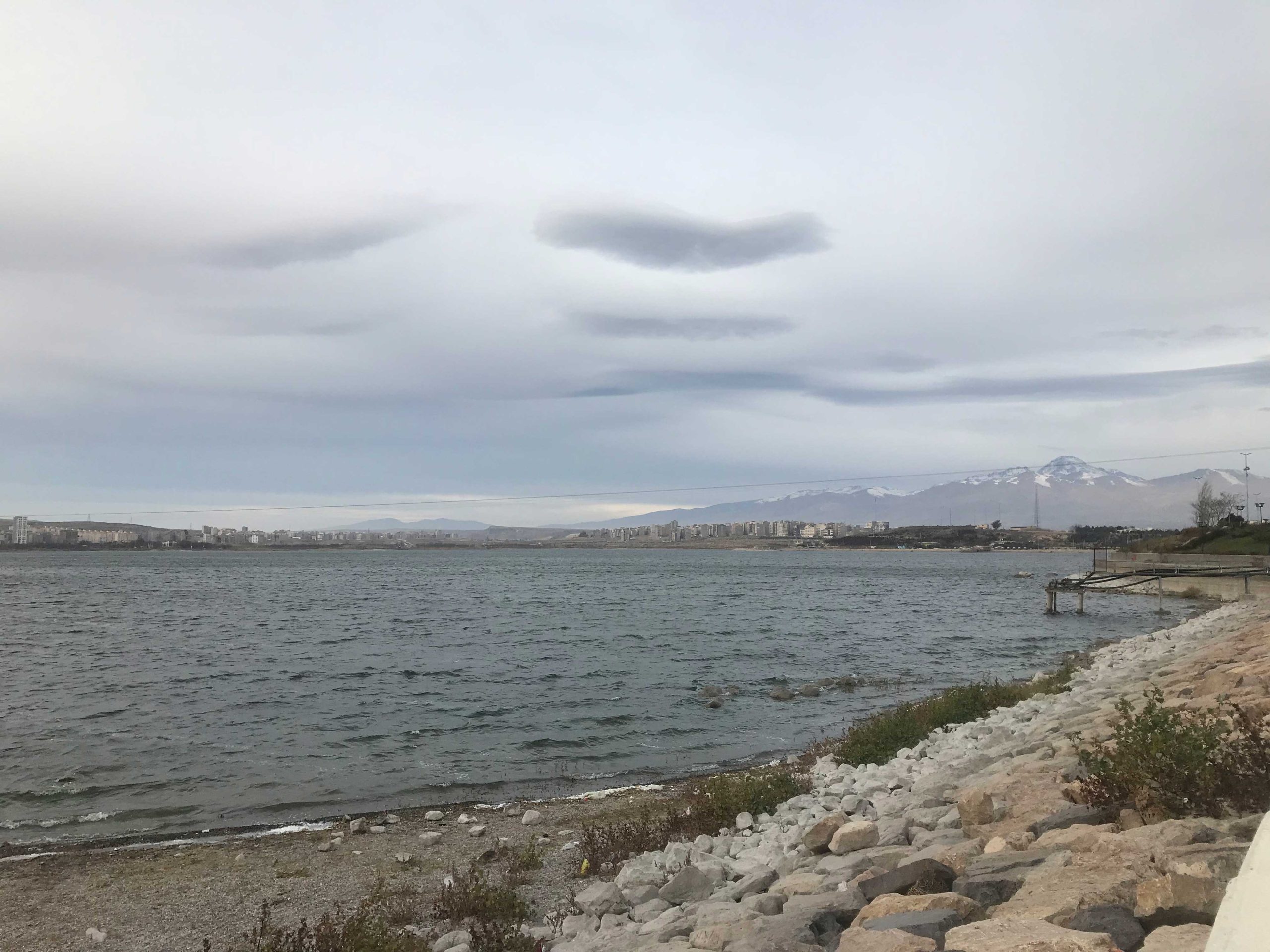
Don’t miss a pleasant time beside Iran’s only inner city lake: Shourabil Lake. Besides the scenic view of the lake, this Ardabil attraction offers recreational services, sports facilities, and cultural centers. So, you can enjoy bike riding, boat riding, running, etc. Local birds and migratory birds also add to the beauties of Shourabil. Visit in spring and summer when the weather is great in the city.
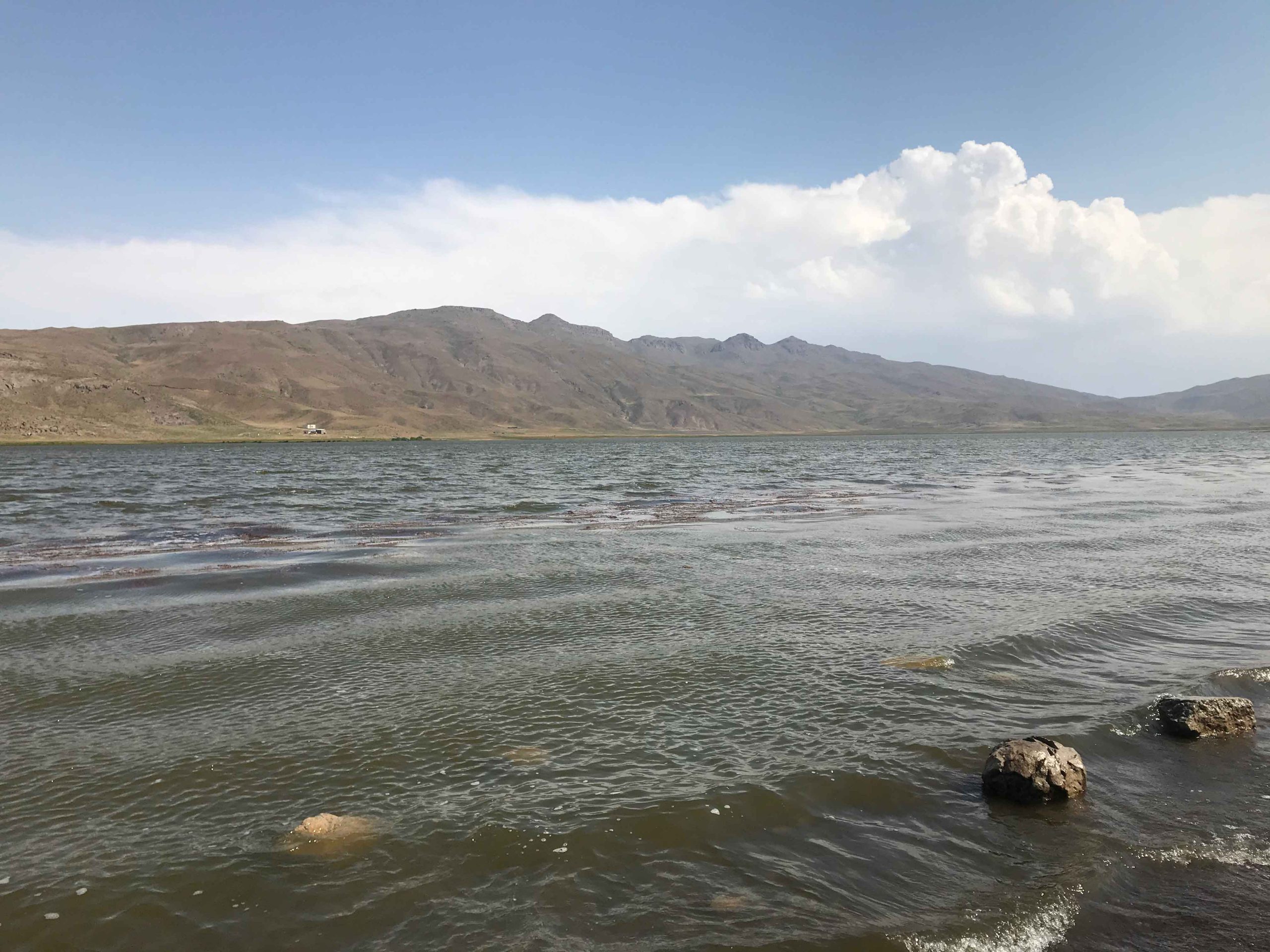
Neor Lake (Neur) is located 48 km. southeast of the city of Ardabil, in an altitude of 2,700 m. above sea level. With an area of more than 220 hectares, it is composed of a smaller and a larger basin, which gets connected in rainy seasons forming a single lake. The Maximum depth of this lake reaches 5. 5 m. with the average of 3 m. depth. The Neor Lake is the habitat of rainbow trout and birds such as ruddy shelduck and migrant swallows. Sports, fishing and other recreational activities are common and popular at this site. The lake contains fish species of rainbow trout; fingerlings were introduced with the objective of practicing commercial and sports fishing. Fingerlings are introduced into the lake every year to promote fishery practices.
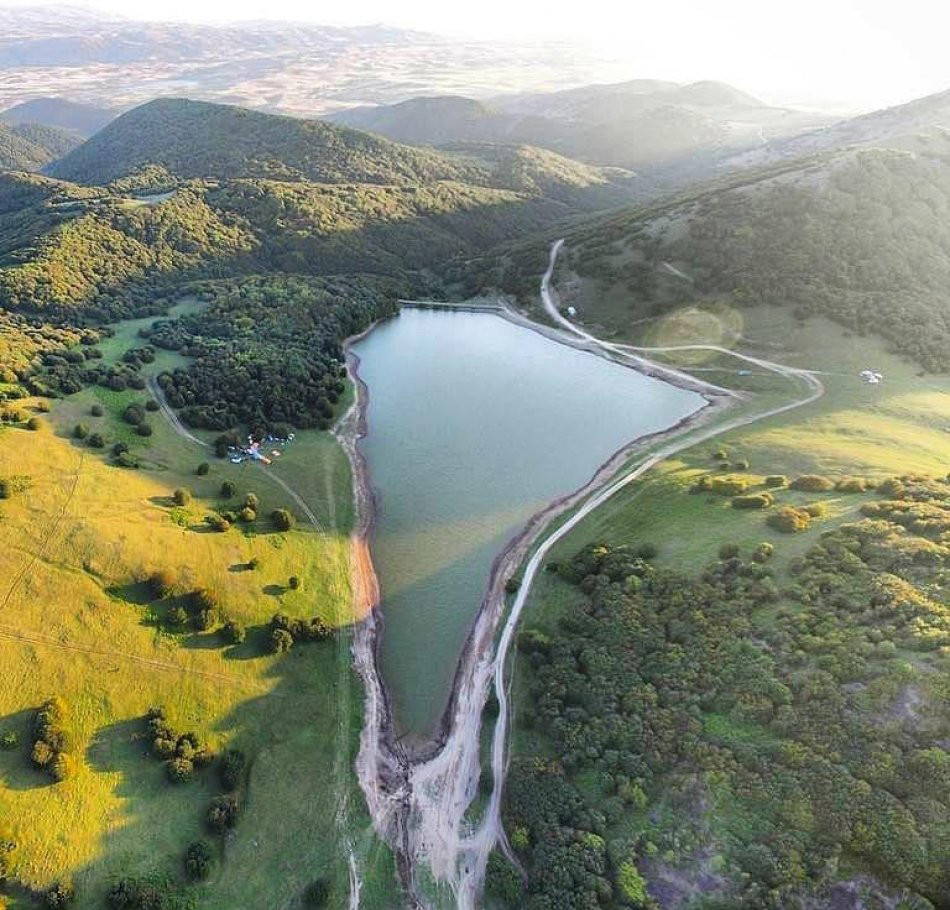
Behind a small dam to the east of Ardabil, you’ll discover a gorgeous pond: Sooha Lake. On the meadows surrounding the lake, you can find beautiful horses living freely. Summer, when the land is covered with chamomiles and lovely springs, is a great time to visit.
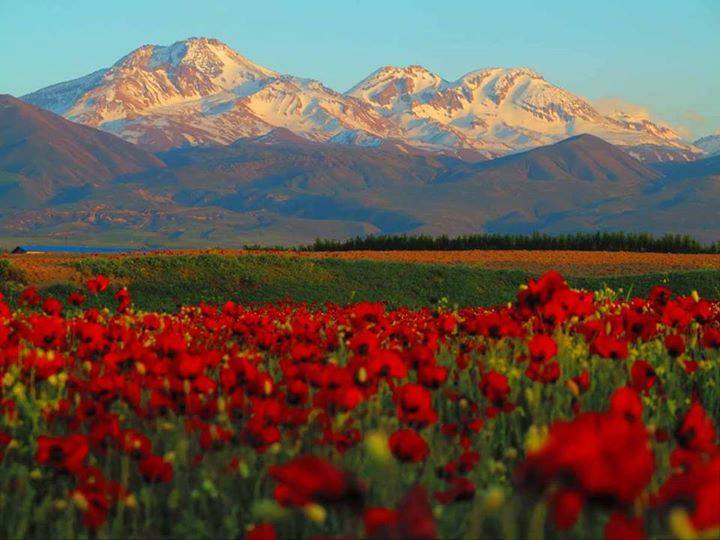
Near Ardabil, you’ll also find a piece of heaven with mesmerizing landscapes: Mughan Plain. This evergreen piece of Iran features lush farmlands, lovely orchards, and beautiful mountains. But intact nature is not the only attraction of this Ardabil attraction, historical landmarks that are as old as 5000 years, and adorable nomads add to the charms of this picturesque destination.
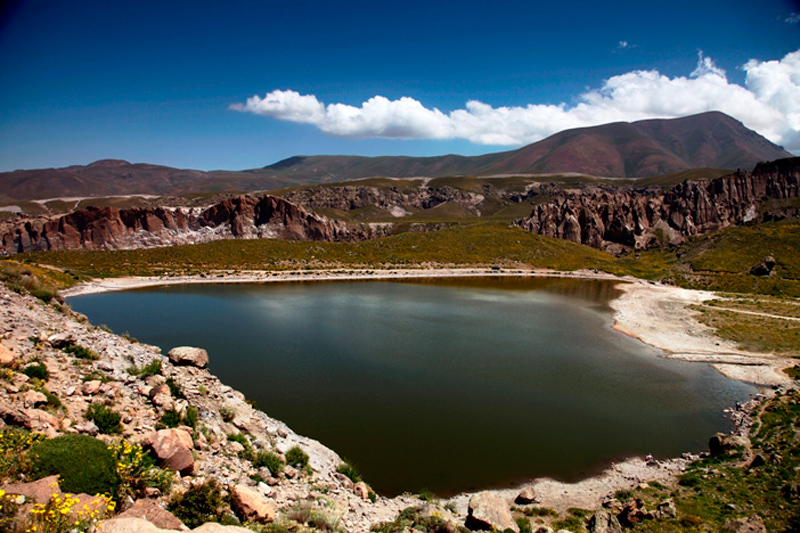
The mythological mountain of Iran, Mount Sabalan, is a real piece of beauty. On the foot of this Ardabil attraction, you’ll find a stunning place: Shirvan Valley. This awe-inspiring valley and its mysterious cliffs have always been a source of folklore. There, beside the interesting cliffs, you’ll discover beautiful animals and adorable springs.
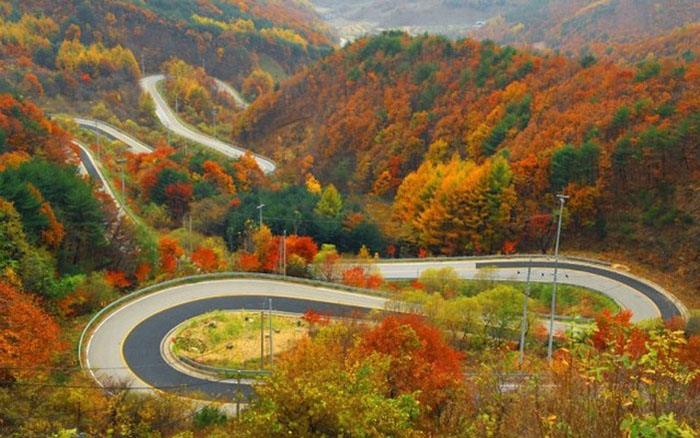
If you leave Ardabil and move on farther north toward the border city of Astara, you’ll be blessed with a dreamy picture: Heyran. This northwestern slice of Iran features a dreamy road and 3 adorable villages. On every moment of your trip through this beautiful region, pristine mountain, jungle, and valley landscapes will take your breath away. You can also enjoy a gondola lift over the foggy villages and amazing nature.
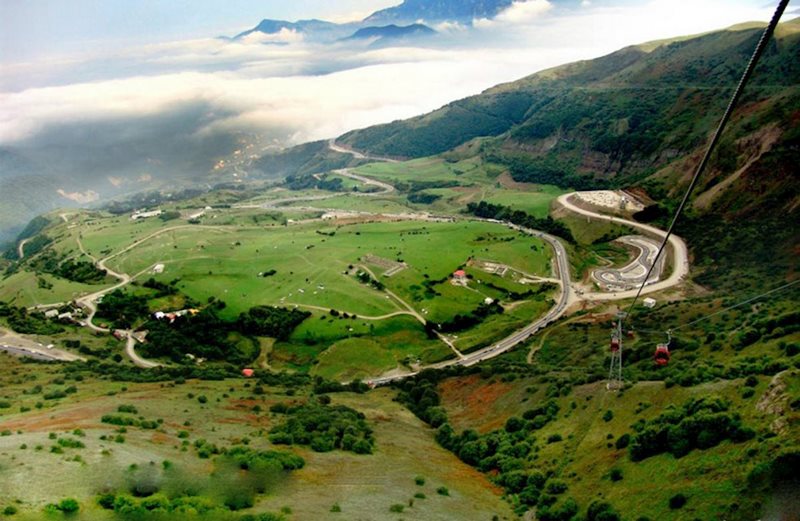
To the northeast of Ardabil, Fandoghloo Forest expects you with its beautiful hazelnut, wild apple, greengage, and wild berry trees. It is one of the few places where you can eat wild fruits, watch beautiful deer, and enjoy the aroma of beautiful herbal plants. Since the jungle is not that large, one day would be enough for an unforgettable adventure there. But this Ardabil attraction is also a popular camping destination.
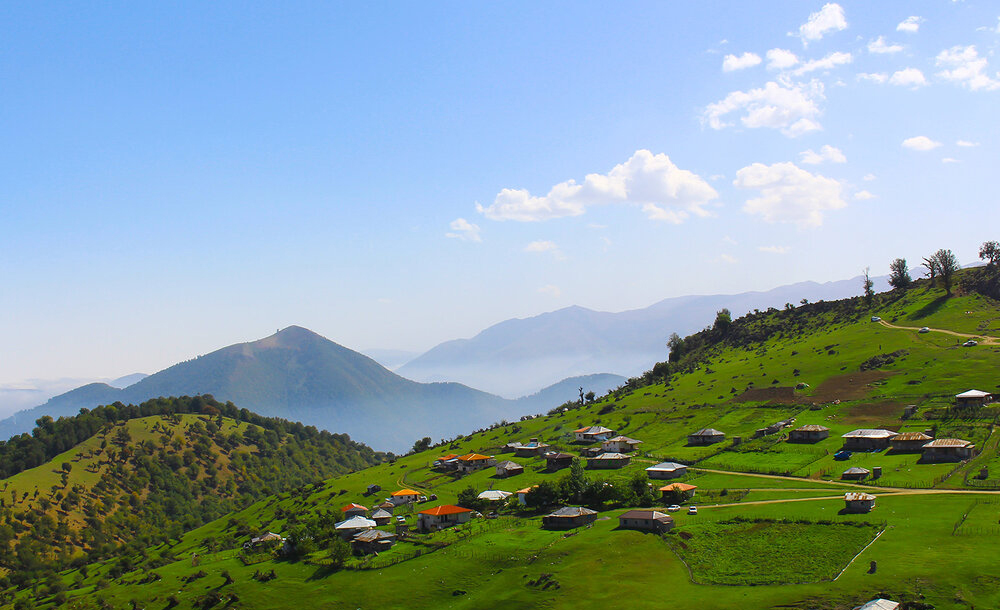
Enjoy a ride through dense jungles, green fields, cascading waterfalls, and scenic lakes. Known as Iran’s dreamiest road, Asalem to Khalkhal Road is a real treat to your eyes. Spice up the 70-kilometer ride with a stop by the jungles and a walk in the pristine nature. The villages and nomad tents in the region are also a charm of the trip.
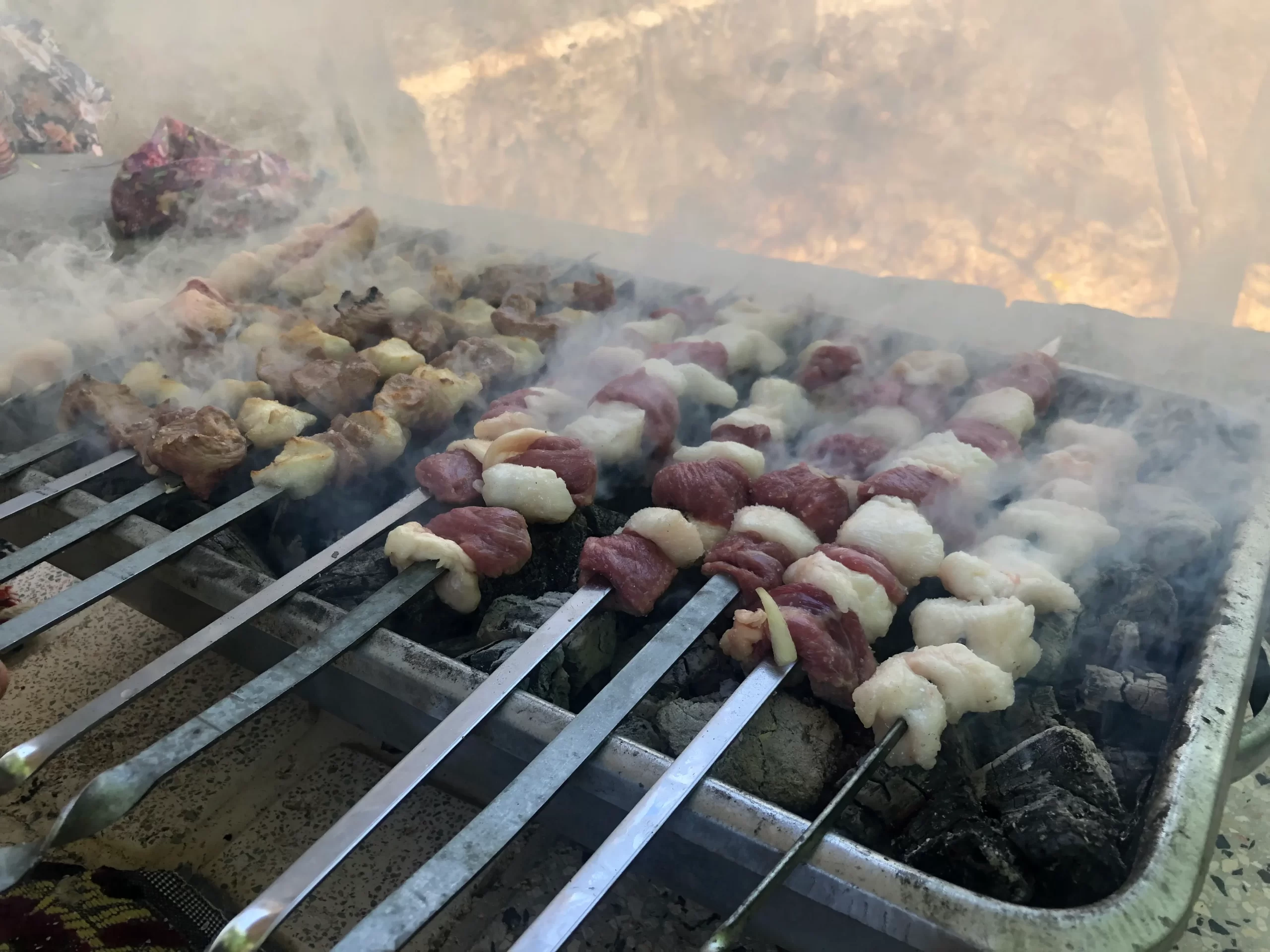
TArdebil will surely delight any food lover. “Basdirma-polo” is a worldwide popular food made with meat, rice, walnut, butter, pomegranate paste, plum, saffron and onion. Just imagine the taste all these delicious appetizers bring out together! Another famous food is called “Saj-kabab” which gets its name from the pan (Saj) that is used for making it. Having ingredients such as lamb, yogurt, onion, garlic, turmeric and bread makes the taste heavenly. You can not forget to try “Torshi-gorma”. It’s a sour stew made with black-eyed pea, lamb, plum, verjuice, tomato paste, saffron and cinnamon. “Sooti-polo” is a local cuisine which comes in different tastes since You can choose whether you’d like it with white meat, red meat or even with fish! The mixture of rice, milk, slivered pistachio, slivered almond and barberry is definitely something! Some locals serve it with roasted raisins and dates. Even though the long list of unique foods in Ardebil like “Tare-esfenaj”, “Khoresh-havij”, “Chighirtema” and so many more never ends; but there also a lot of delicious pottages and soups to talk about!
You can easily find the locals eating “Ash-doogh”. Sour buttermilk, pea, rice, mint, onion and greens give it a special taste. You can also try “Ash-yarma” which its main ingredient is wheat semolina, “Ash-gildik” which is made with meat, or even the famous milk soup if you like milk and peas.
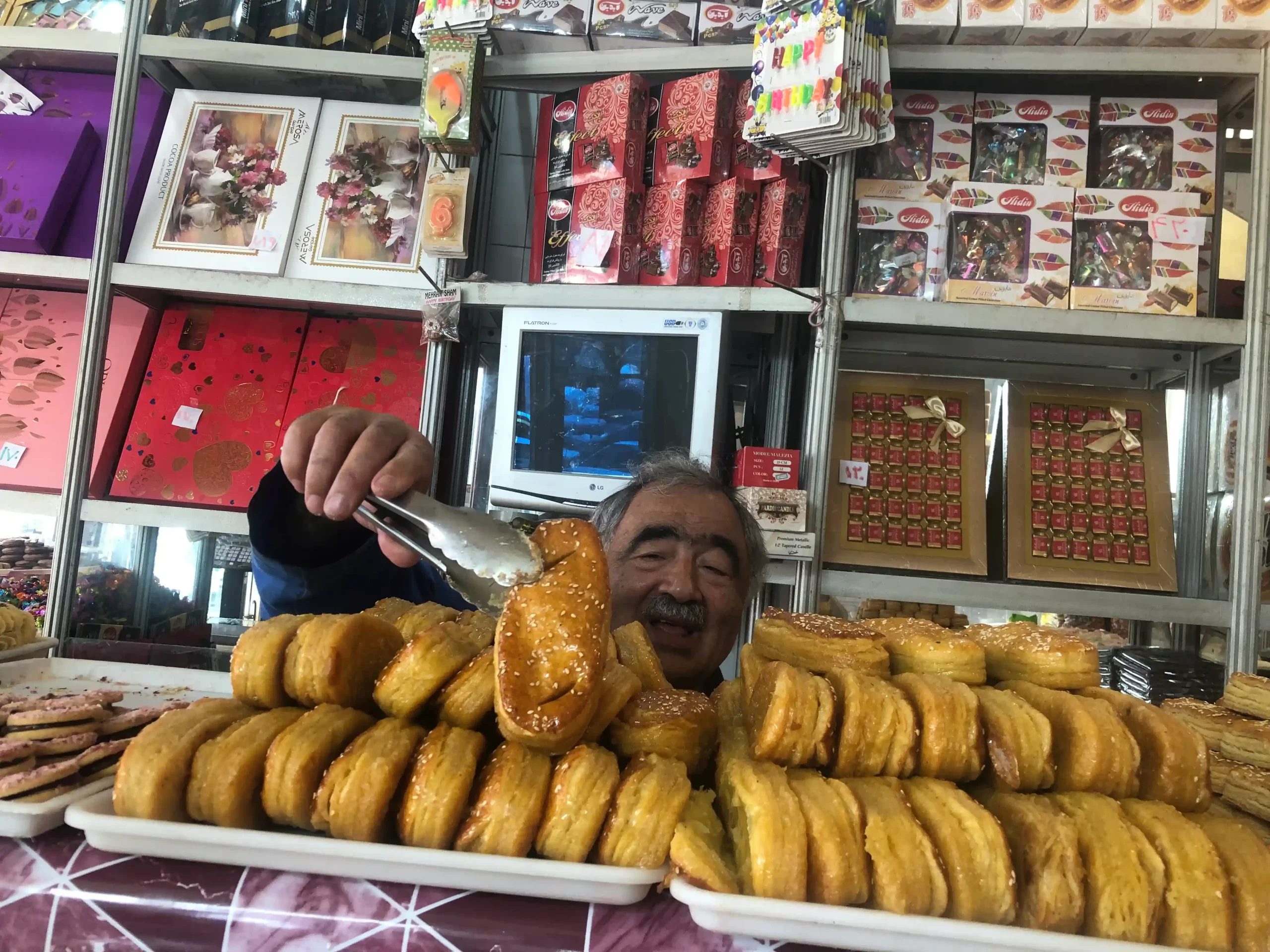
You can see the reflection of Ardebil’s rich history and culture in its unique souvenirs. Leather painting for example, is one of the most beautiful things you can bring back home with yourself. Carpet weaving includes using different patterns and designs on handmade rugs. “Jajim-bafi” is also a unique art using natural threads and colors with sheep’s cotton to weave different patterns. Ardebil’s distinctive local clothing indicates its origin and history. They are mainly made from natural fabrics such as wool and cotton. There are also many special copper dishes in different geometric shapes and traditional instruments made in here!
If you’re looking for any edible souvenirs, don’t miss the famous “Nan-fatir” which is a kind of an unleavened bread but even more delicious. The ginger halva, black halva, baklava and Ardebil’s sweets are all waiting for you!